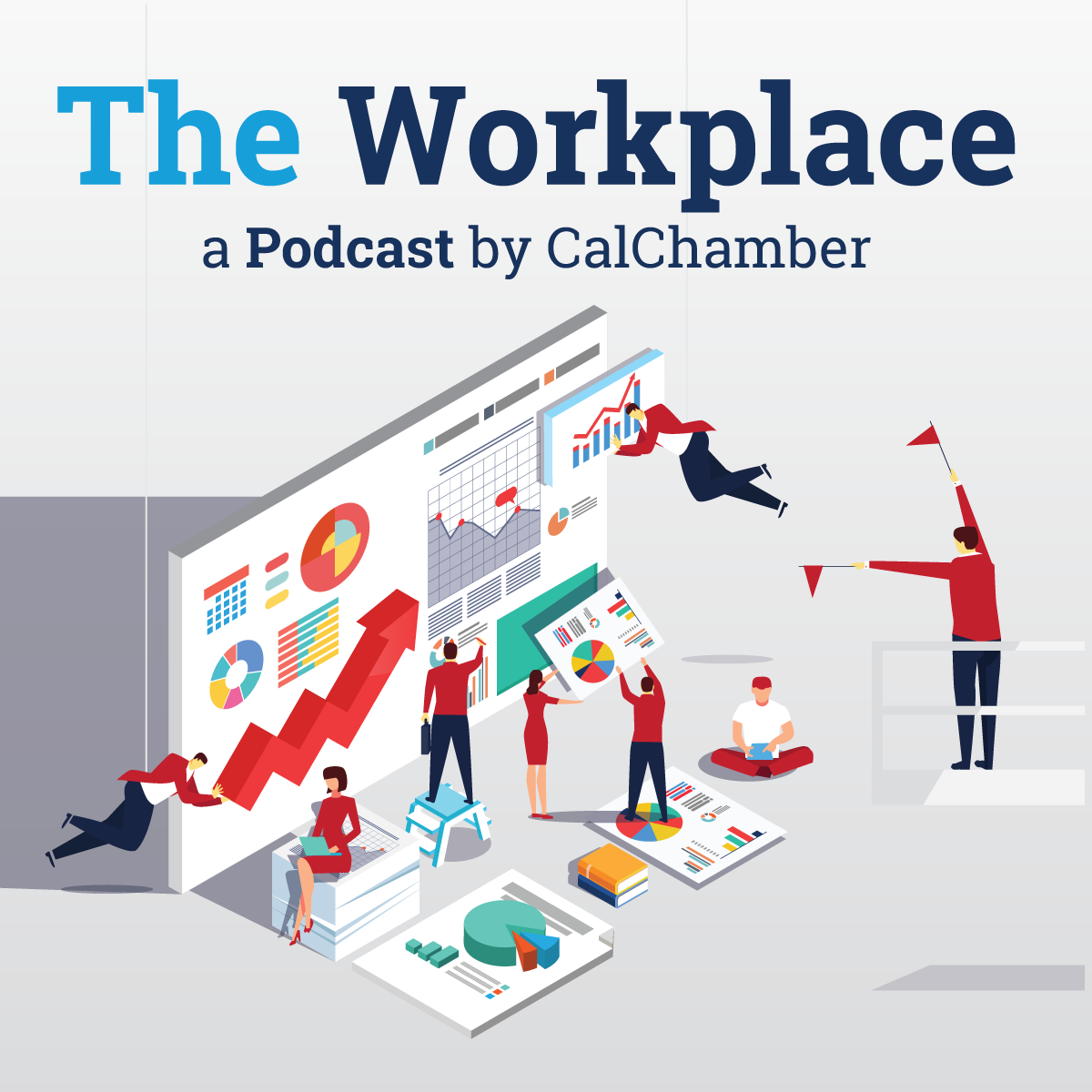
In Episode 114 of The Workplace podcast, CalChamber Executive Vice President and General Counsel Erika Frank, CalChamber Policy Advocate Ashley Hoffman, and Benjamin Ebbink, partner at Fisher Phillips law firm, discuss California’s new COVID-19 supplemental paid sick leave requirement (SB 95).
New Law in Effect Now
On March 19, 2021, Governor Gavin Newsom signed SB 95, bringing back California’s COVID-19 Supplemental Paid Sick Leave.
Most employers already are familiar with complying with some of the requirements of SB 95, whether it is because of the federal Families First Coronavirus Response Act (FFCRA), AB 1867 (California’s previous COVID-19 Supplemental Paid Sick Leave law) or local ordinances that imposed supplemental paid sick leave requirements, Ebbink tells podcast listeners. Still, SB 95 is a new mandate with its own specific provisions.
The new paid leave requirement applies to all employers with more than 25 employees, and provides up to 80 hours of COVID-19-related paid leave. It also adds several new qualifying reasons for which leave can be taken, including some related to COVID-19 vaccines, he explains.
The law went into effect on March 29, but applies retroactively to January 1, 2021. This retroactive provision is the tricky element of SB 95, because if an employee took unpaid time off (or time was paid at a lower rate) in January, February or March, that employee can ask the employer to retroactively pay for that time. This can create logistical challenges for many employers, Ebbink points out.
SB 95 also contains a notice requirement. A model poster is available at the Department of Industrial Relations (DIR) website, and the notice may be provided electronically to employees who work remotely, he explains.
SB 95 expires at the end of September, but the Legislature may extend it at any time.
Background
Many employers were relieved when AB 1867 expired at the end of December without an extension, Frank says. So why, she asks Hoffman, was SB 95 passed after months of inaction?
Hoffman replies that AB 1867 was tied to the FFCRA, which also expired in December. Congress at the time made supplemental paid sick leave voluntary and offered tax credits as an incentive. That is why AB 1867 expired in December, but it is not clear why it took until March to get the state Legislature interested in supplemental paid sick leave, she says.
When SB 95 was first introduced, it contained provisions that were broader — for example, an employee could take time off to care for anyone, not just a family member, and it applied to all employers, not just those with more than 25 employees. A coalition of more than 110 business groups led by CalChamber issued a letter of concern, detailing the impact of the proposed law on small business. Working with lawmakers, the coalition was able to secure amendments to the bill, including an exception for small business, Hoffman explains.
Another amendment that was agreed upon specifically addresses Cal/OSHA’s COVID-19 Emergency Temporary Standards, stating that in order for employers to comply with the standard’s requirement to maintain the earnings of employees exposed to COVID-19 and excluded from the workplace (also referred to as exclusion pay), employers may require employees to first exhaust their COVID-19 supplemental paid sick leave.
Preparation
The first step employers need to take to comply with SB 95 is to provide the supplemental paid sick leave notice poster to employees. The poster should be posted in the workplace or it may be provided electronically to employees who are not frequenting the worksite, Ebbink says.
A model poster is available at www.dir.ca.gov.
Next, employers should work on developing their company policy and a set of procedures on how to handle these types of COVID-19 paid leave requests. Because the law is in effect now and applies retroactively, employees can start taking leave right away or request retroactive pay, Ebbink explains. This is why it’s important to develop a procedure and assign one person to handle these requests.
Employers have very little time to figure this out, so they need to move quickly, he urges.
Questions Remain
One big concern that employers have is how SB 95 stacks with other paid leaves—how much time is actually given out and what it will look like cost wise, Hoffman says.
There also is some confusion on the American Rescue Plan tax credits and whether they can be used to fully cover the costs of SB 95 leave. Other unanswered questions include whether former employees can request retroactive payments, or what to do if an employee took unpaid leave but took state disability or unemployment insurance payments, she tells Frank.
An FAQ summary from the Labor Commissioner is available at www.dir.ca.gov.
Hoffman suggests consulting legal counsel for questions not covered in the Labor Commissioner FAQs.

